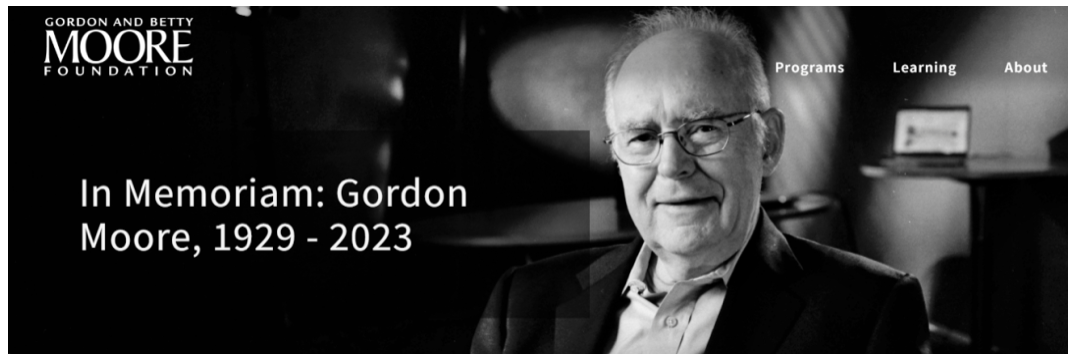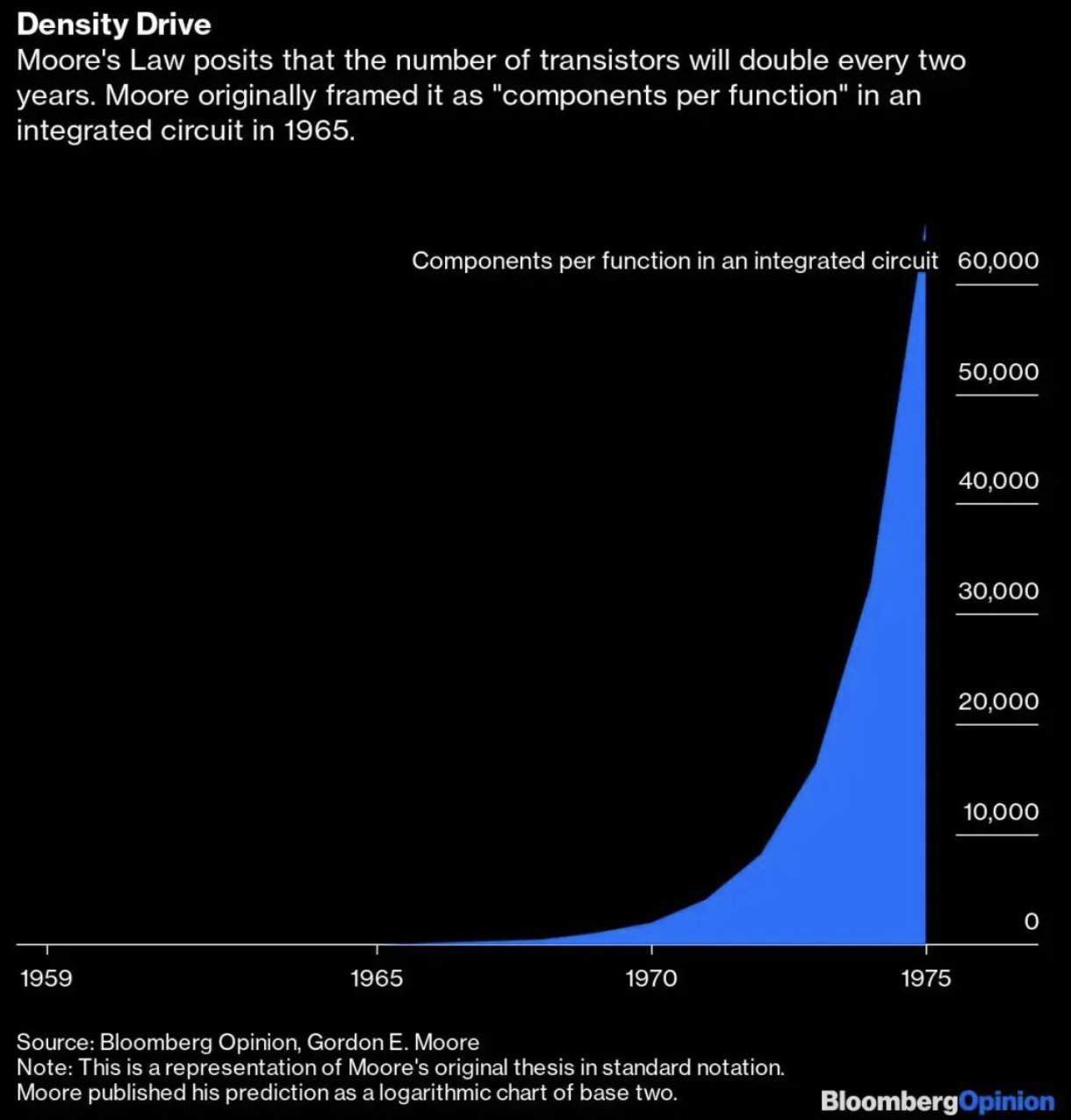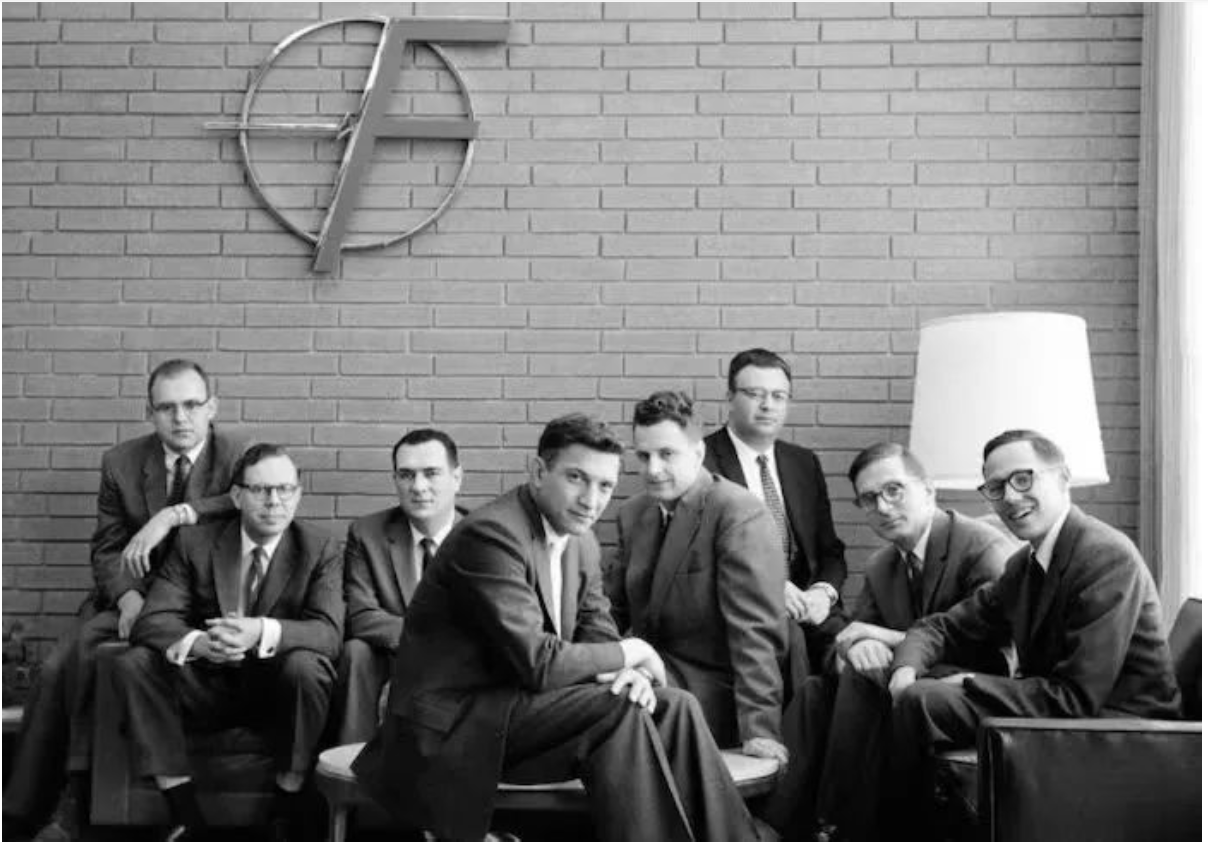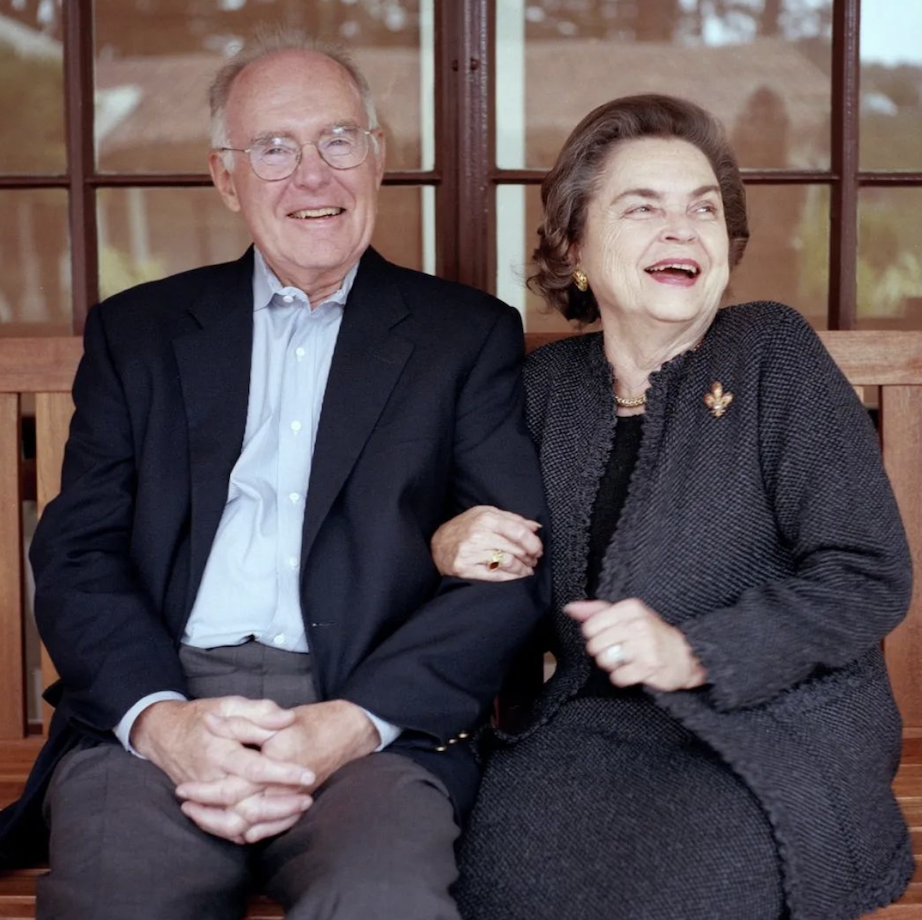Intel co-founder Gordon Moore died on March 24, local time, at the age of 94. He was a pioneer in the semiconductor industry and his "Moore's Law" predicted a steady rise in computing power for decades.

Screenshot of the official website of the Gordon and Betty Moore Foundation
He died at his home in Hawaii with his family by his side, Intel Corporation and the Gordon and Betty Moore Foundation announced.
In 1968, Gordon Moore co-founded Intel with Robert Noyce and served as the company's vice president. In 1975, he became president and CEO. Eventually, "Intel Inside" processors were used in more than 80% of the world's personal computers.
Andy Grove joined Intel on its first days and later served as CEO and chairman.

Andy Grove, Robert Noyce and Gordon Moore
Gordon Moore once proposed the famous "Moore's Law": when the price remains unchanged, the number of transistors that can be accommodated on an integrated circuit will double approximately every 18-24 months, and the performance will also double. In other words, the computer performance that each dollar can buy will more than double every 18-24 months.

Moore believes that due to advances in technology, the number of transistors on a microchip has roughly doubled every year since the invention of the integrated circuit. His prediction that this trend would continue became known as "Moore's Law," later revised to "every two years."
Twenty years before the personal computer revolution, and more than 40 years before Apple introduced the iPhone, Moore wrote in his article: "Integrated circuits will bring about home computers—or at least terminals connected to central computers, automatic car controls, and Miracles in personal portable communications devices and more.”
Since Moore wrote that article, chips have become exponentially more efficient and cheaper, helping to drive most of the world's technological advances for half a century, allowing not just the personal computer but the Internet and Silicon Valley giants like The rise of Apple, Facebook and Google.
"It was great to be in the right place at the right time," Moore said in an interview around 2005. "I was lucky enough to get into the semiconductor industry when it was in its infancy. And I had the opportunity, from the time we couldn't make it, to From the era of a single silicon transistor to an era of putting 1.7 billion silicon transistors on a chip! This is an extraordinary journey.”
Although Moore predicted the personal computer movement, he told Forbes magazine that he didn't buy a home computer until the late 1980s.
Moore, a San Francisco native, received his PhD in chemistry and physics from the California Institute of Technology in 1954. He then went to work at Shockley Semiconductor Laboratory, where he met future Intel co-founder Robert Noyce. As part of Silicon Valley's "Traitor Eight," they left Shockley Semiconductor Laboratory in 1957 to form Fairchild Semiconductor. In 1968, Moore and Noyce left Fairchild Semiconductor to found a memory chip company, which was soon named Intel, short for Integrated Electronics.

The famous "Eight Traitors" of Silicon Valley in history. The first from the left is Gordon Moore, the fourth from the left is Robert Noyce.
Moore and Noyce's first hire was Andy Grove, another Fairchild Semiconductor colleague who led Intel through a period of explosive growth in the 1980s and 1990s.
Moore described himself to Fortune as an "accidental entrepreneur" who didn't have a strong entrepreneurial urge, but he, Noyce and Grove formed a strong partnership. Noyce had the theories to solve chip engineering problems, while Moore rolled up his sleeves and spent countless hours tweaking transistors, perfecting Noyce's broad but sometimes ill-defined ideas. Grove fills the gap in the mix as Intel's operations and management expert.
Moore's genius also inspired other engineers who worked for him, and under his and Noyce's leadership, Intel invented the microprocessor, paving the way for the personal computer revolution.
Moore served as Intel's executive chairman until 1975. Moore served as the company's chairman and chief executive officer from 1979 to 1987, and he served as chairman until 1997.
In 2013, Forbes magazine estimated his net worth at $4.1 billion.
Moore has been a long-time fisherman, pursuing his interests around the world. In 2000, he and his wife Betty founded a foundation focused on environmental causes. The foundation, which undertakes projects such as protecting the Amazon and salmon streams in the United States, Canada and Russia, is funded by Moore's donation of Intel stock worth about $5 billion.

Moore and wife Betty
Moore has also donated hundreds of millions of dollars to his alma mater, Caltech, to keep it at the forefront of technology and science and to support the Search for Extraterrestrial Intelligence project called SETI.
Moore received the United States' highest civilian honor, the Medal of Honor, from former U.S. President George W. Bush in 2002. He and his wife have two children.
With the acceleration of new technologies such as artificial intelligence (AI), new non-silicon semiconductor materials, and optoelectronics, as well as improvements in semiconductor processes and architecture, in recent years, people have gradually begun to have certain opinions on whether "Moore's Law" will be delayed or invalidated. .
Last September, at the opening event of Intel Innovation 2022, Intel's current CEO Pat Gelsinger said hoarsely that "Moore's Law" is not dead, it is alive and well.
However, a week ago, NVIDIA founder and CEO Jensen Huang expressed the opposite view. Huang Renxun said that achieving twice the performance expectations at similar costs is a thing of the past for the chip industry. "Moore's Law is dead."
The two chip giants have brought the debate and disagreement over "Moore's Law" to the highest point.
In fact, as early as 2015, on the occasion of the 50th anniversary of Moore's Law, Gordon Moore, who has retired from behind the scenes to do charity, said bluntly in an interview with New York Times columnist Thomas Friedman: "Moore's Law" Won't last forever.
Previous article:2 trillion yen! Toshiba accepts takeover bid from Japanese consortium
Next article:The country's first intellectual property operation center in the semiconductor field was launched in Wuxi, Jiangsu
- Popular Resources
- Popular amplifiers
- Allegro MicroSystems Introduces Advanced Magnetic and Inductive Position Sensing Solutions at Electronica 2024
- Vietnam's chip packaging and testing business is growing, and supply-side fragmentation is splitting the market
- The US asked TSMC to restrict the export of high-end chips, and the Ministry of Commerce responded
- ASML predicts that its revenue in 2030 will exceed 457 billion yuan! Gross profit margin 56-60%
- ASML provides update on market opportunities at 2024 Investor Day
- It is reported that memory manufacturers are considering using flux-free bonding for HBM4 to further reduce the gap between layers
- Intel China officially releases 2023-2024 Corporate Social Responsibility Report
- Mouser Electronics and Analog Devices Launch New E-Book
- AMD launches second-generation Versal Premium series: FPGA industry's first to support CXL 3.1 and PCIe Gen 6
- LED chemical incompatibility test to see which chemicals LEDs can be used with
- Application of ARM9 hardware coprocessor on WinCE embedded motherboard
- What are the key points for selecting rotor flowmeter?
- LM317 high power charger circuit
- A brief analysis of Embest's application and development of embedded medical devices
- Single-phase RC protection circuit
- stm32 PVD programmable voltage monitor
- Introduction and measurement of edge trigger and level trigger of 51 single chip microcomputer
- Improved design of Linux system software shell protection technology
- What to do if the ABB robot protection device stops
- Allegro MicroSystems Introduces Advanced Magnetic and Inductive Position Sensing Solutions at Electronica 2024
- Car key in the left hand, liveness detection radar in the right hand, UWB is imperative for cars!
- After a decade of rapid development, domestic CIS has entered the market
- Aegis Dagger Battery + Thor EM-i Super Hybrid, Geely New Energy has thrown out two "king bombs"
- A brief discussion on functional safety - fault, error, and failure
- In the smart car 2.0 cycle, these core industry chains are facing major opportunities!
- The United States and Japan are developing new batteries. CATL faces challenges? How should China's new energy battery industry respond?
- Murata launches high-precision 6-axis inertial sensor for automobiles
- Ford patents pre-charge alarm to help save costs and respond to emergencies
- New real-time microcontroller system from Texas Instruments enables smarter processing in automotive and industrial applications
- Learning Dynamics—Case Study Results Demonstration Sine Wave and Triangular Wave Signal Generator Design
- [MM32 eMiniBoard Review] ADC collects potentiometer data and sends it to the computer for display via USB-CDC
- Has anyone made a circuit that triggers a low level for 2ms and then maintains the low level for 80ms?
- Device selection - What parameters should be paid attention to when selecting TVS tubes?
- I won an Apple computer at the annual meeting, but the company I left wants to take it back. What should I do?
- Everyone is paying attention to Qorvo's broadband access CATV and FTTH products
- Introduction to TI C2000 Chopper Module
- TI - MCU - MSP430 User Guide 31 -> BSL
- EEWORLD University - How to use independent measurement ADC to design high-precision CT phase meter
- A collection of selected PCB design resources, free points download for a limited time

 MAX516BCNG-T
MAX516BCNG-T











 京公网安备 11010802033920号
京公网安备 11010802033920号